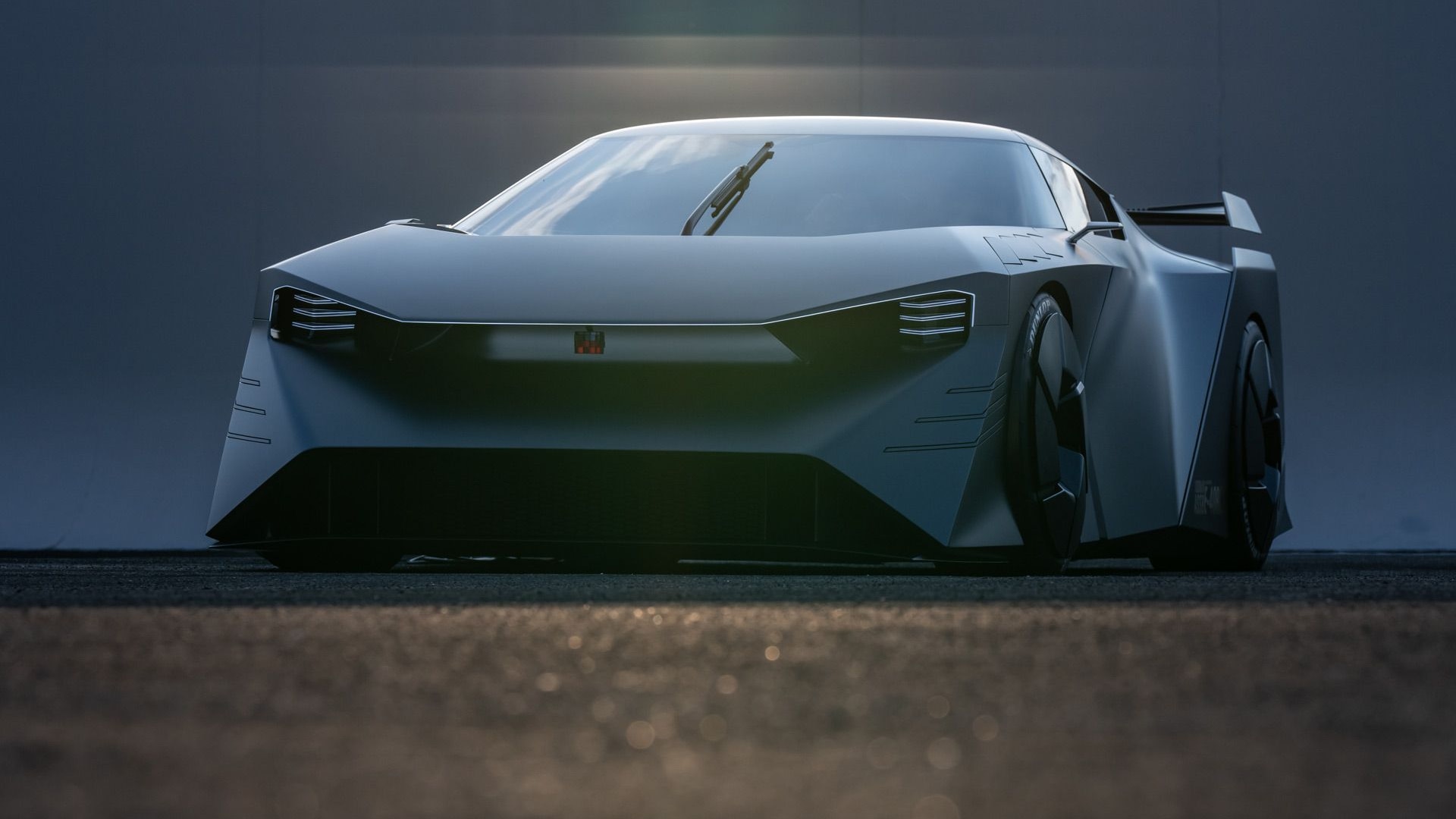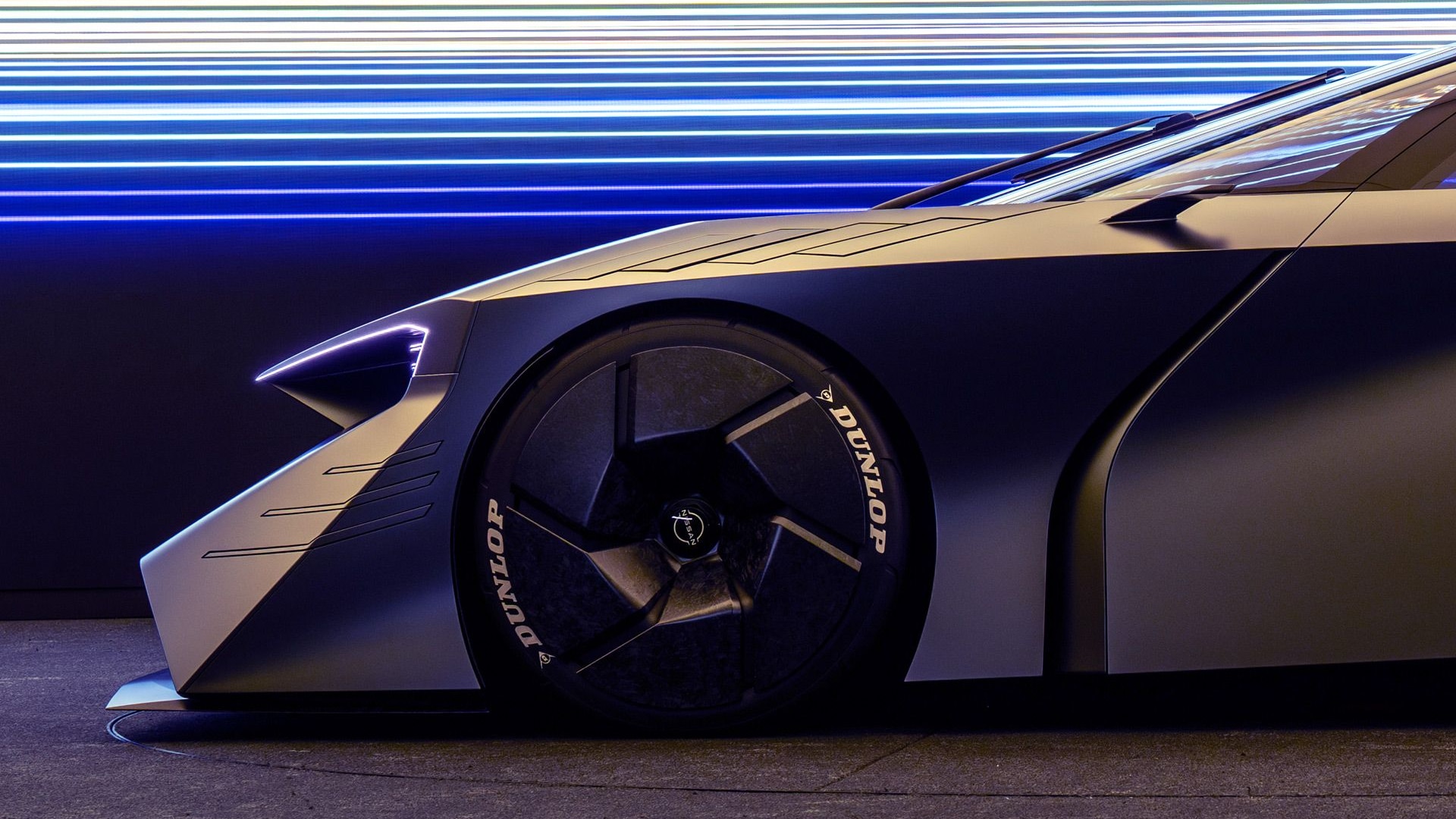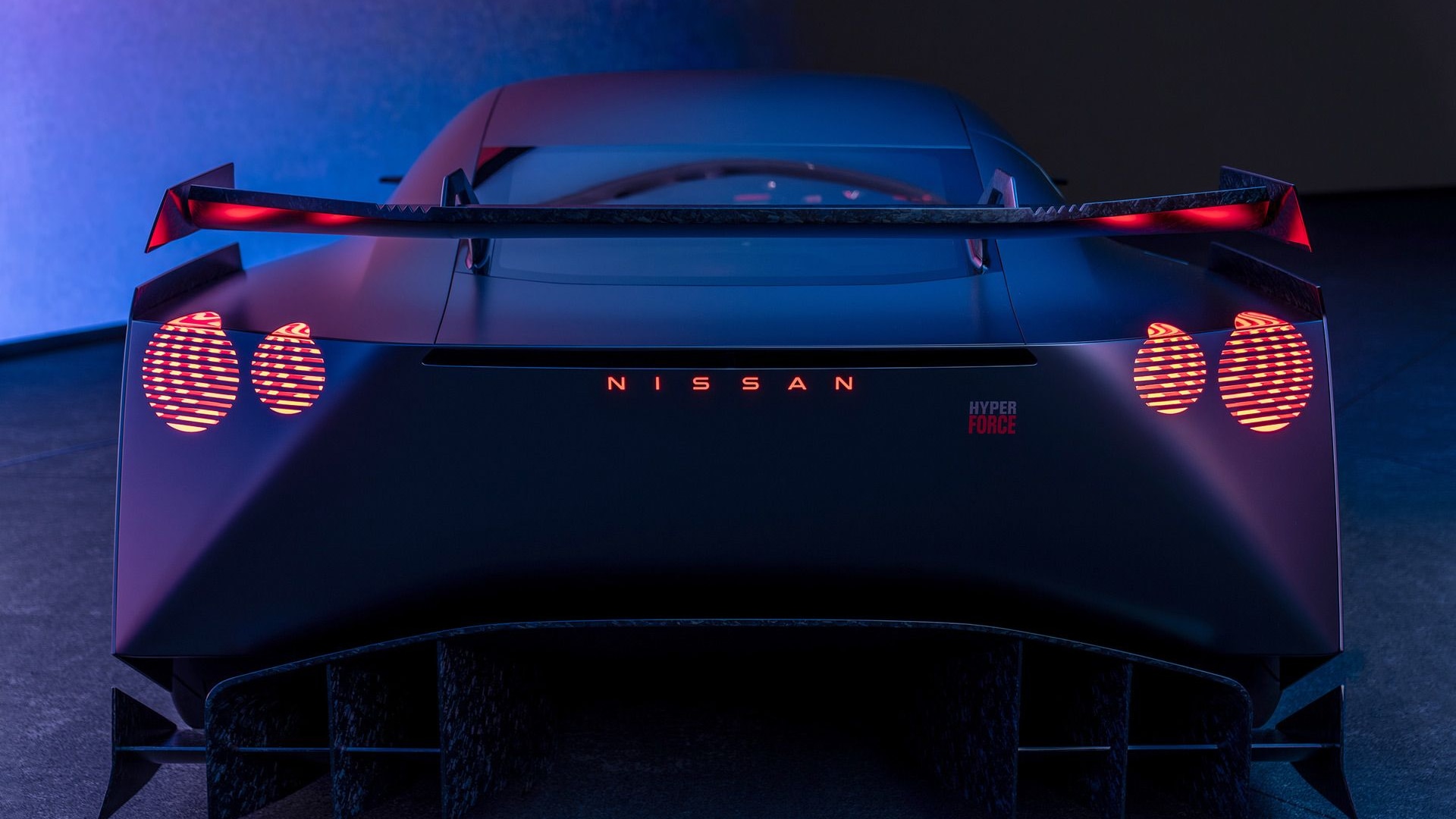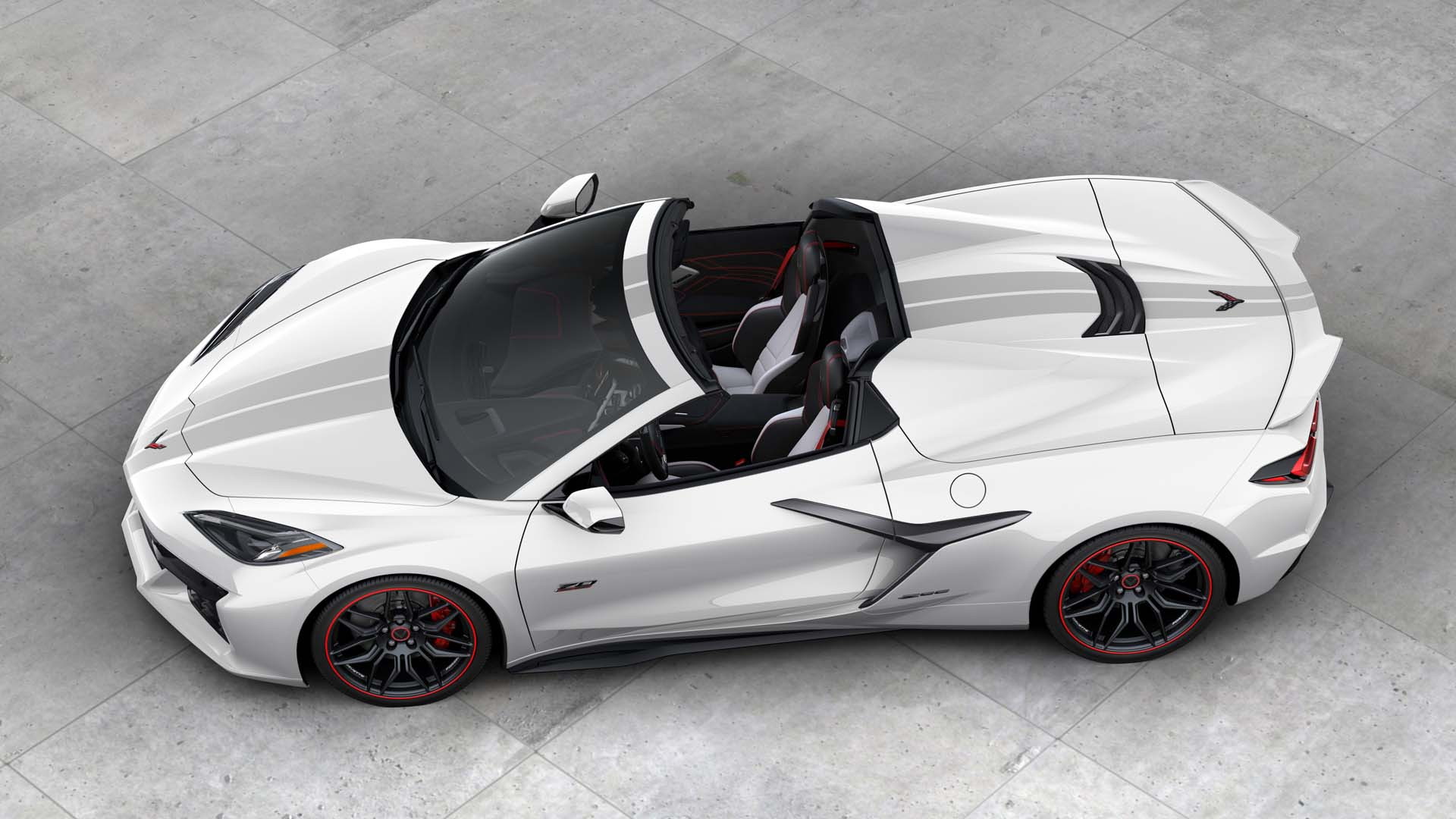Nissan has provided the strongest indication yet that its next GT-R sports car will go the electric route with Wednesday's reveal of the Hyper Force concept at the 2023 Tokyo auto show.
A surprise fifth member of Nissan's Hyper family of electric concepts previewing the automaker's future design and technology, the Hyper Force isn't directly referred to as a GT-R, but its styling is clearly inspired by previous generations of Japan's sports car icon, and badges front and rear mimic the GT-R badge with their silver top and red bottom.
Additional GT-R cues include the jet fighter cockpit, stove-top taillights, large rear wing, and headlight cutouts that resemble the shape of the headlights of the popular R34 generation. The graphics on the rear fenders are also a nod to the R30 generation of the Nissan Skyline.
Peak power from the concept's electric powertrain registers at 1,341 hp, or 1,000 kw. There's also an all-wheel-drive system controlled by an advanced version of the Nissan e-4orce electric torque-vectoring system, plus a solid-state battery. Solid-state battery cells have the potential to reduce the weight of an EV's battery while improving range and charge times. It's a technology Nissan is currently developing with a view for launch around 2028.
The concept also benefits from carbon-fiber construction, including for the wheels, plus an aerodynamic package honed by race engineers from Nissan's Nismo motorsport department. Elements like the hood duct, lip spoiler, front flics, rear wing, and rear diffuser all help to produce huge downforce at speed. Nissan said the concept also features a new technology known as plasma actuators to further enhance aerodynamic properties. The technology relies on strategically placed electrodes that charge air particles and direct them using an electromagnetic field.
Access to the cabin is via butterfly doors, a design traditionally found on supercars like those from McLaren. The driver is faced with various screens providing important performance metrics including information on tire and brake temperature, grip levels, and power distribution. The driver can also adjust features like the suspension and stabilizers via the screens. The content displayed changes depending on whether the driver has selected a GT (grand touring) or R (race) mode.
Other technologies featured in the concept include a self-driving system that uses a lidar sensor, and a helmet with virtual and augmented reality projection that lets the driver simulate a race on some of the world's top racetracks, while the car is parked. A driver can compete virtually with his or her friends, or bots.
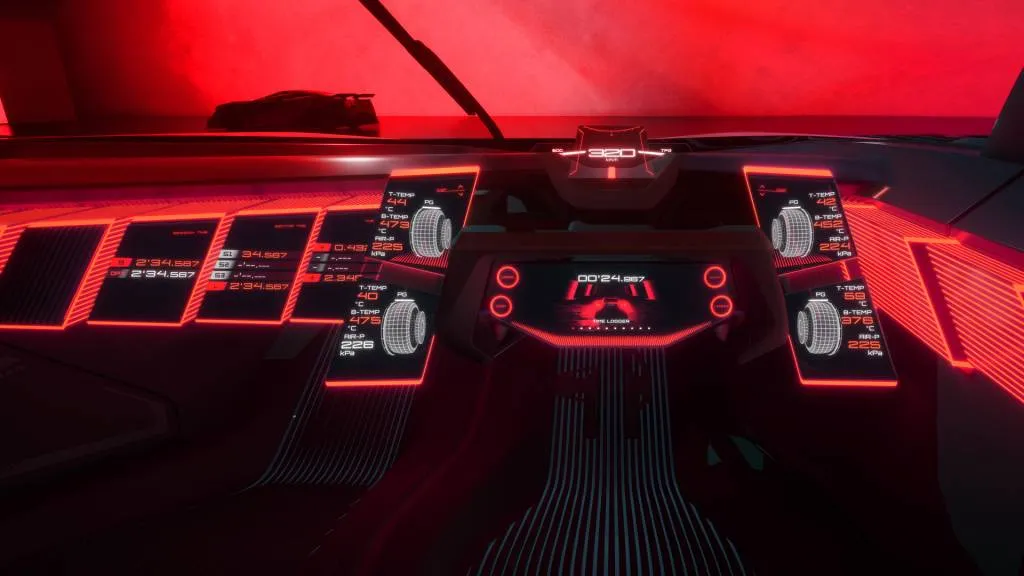
Nissan Hyper Force concept
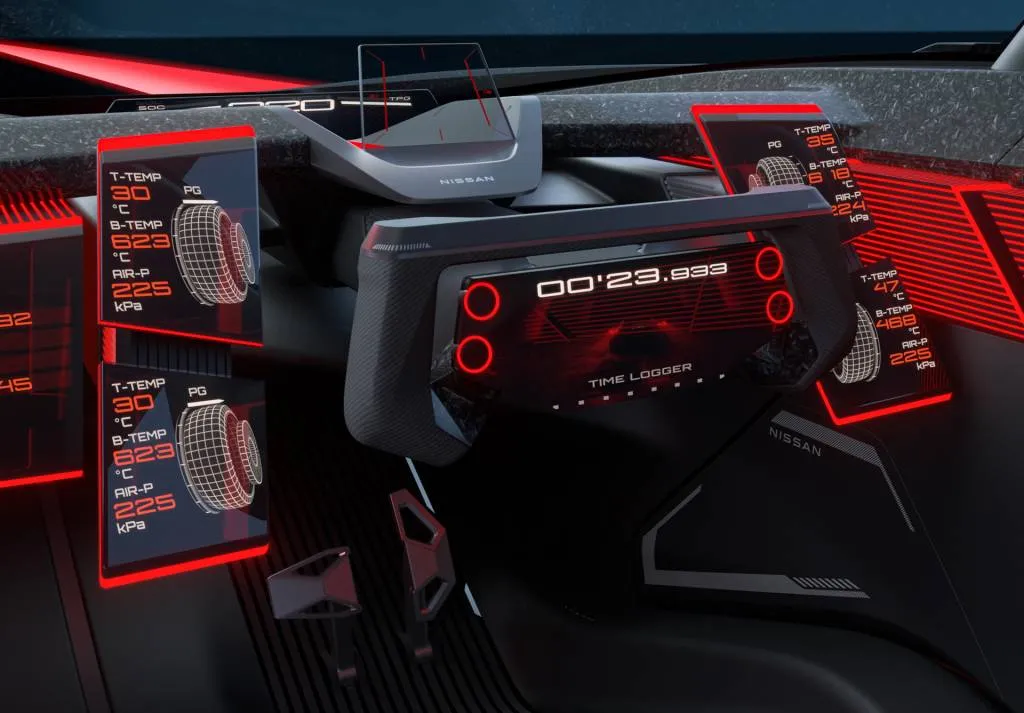
Nissan Hyper Force concept

Nissan Hyper Force concept
While Nissan hasn't said the Hyper Force will enter production as the next GT-R, the automaker has stated the concept is its vision for a “next-generation high-performance car.”
Nissan's last official word on the GT-R was 2021's confirmation the automaker was developing a new platform for the next GT-R, the R36. The current R35 GT-R dates back to the 2009 model year, so a replacement has been expected for some time.
Nissan's other Hyper EV concepts include the previously revealed Hyper Urban crossover, Hyper Tourer minivan, Hyper Punk connectivity crossover, and Hyper Adventure rugged SUV.
